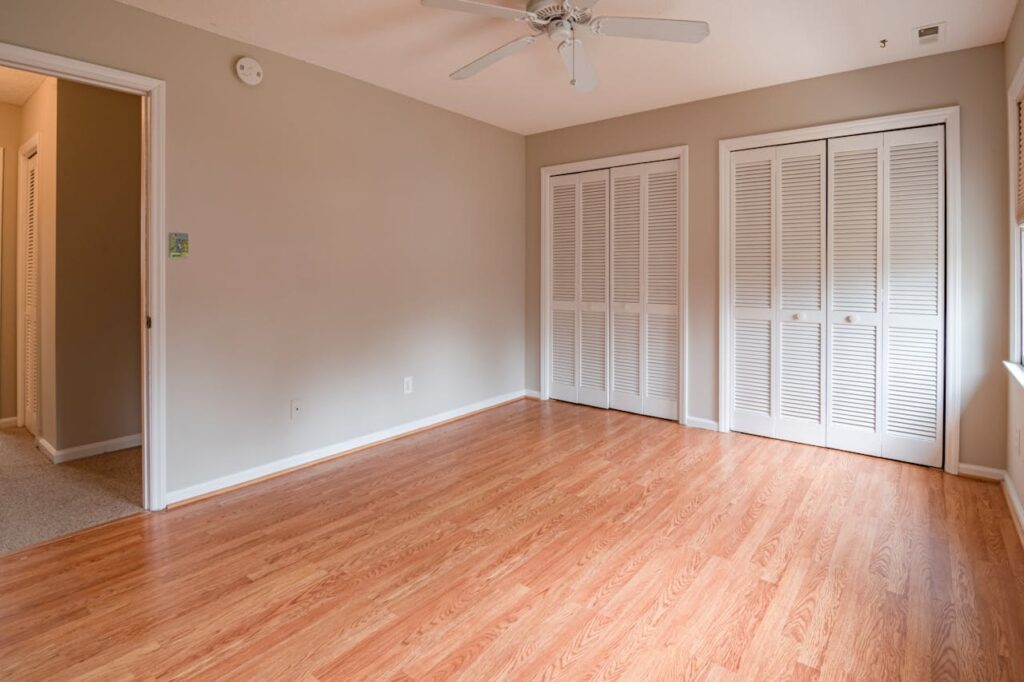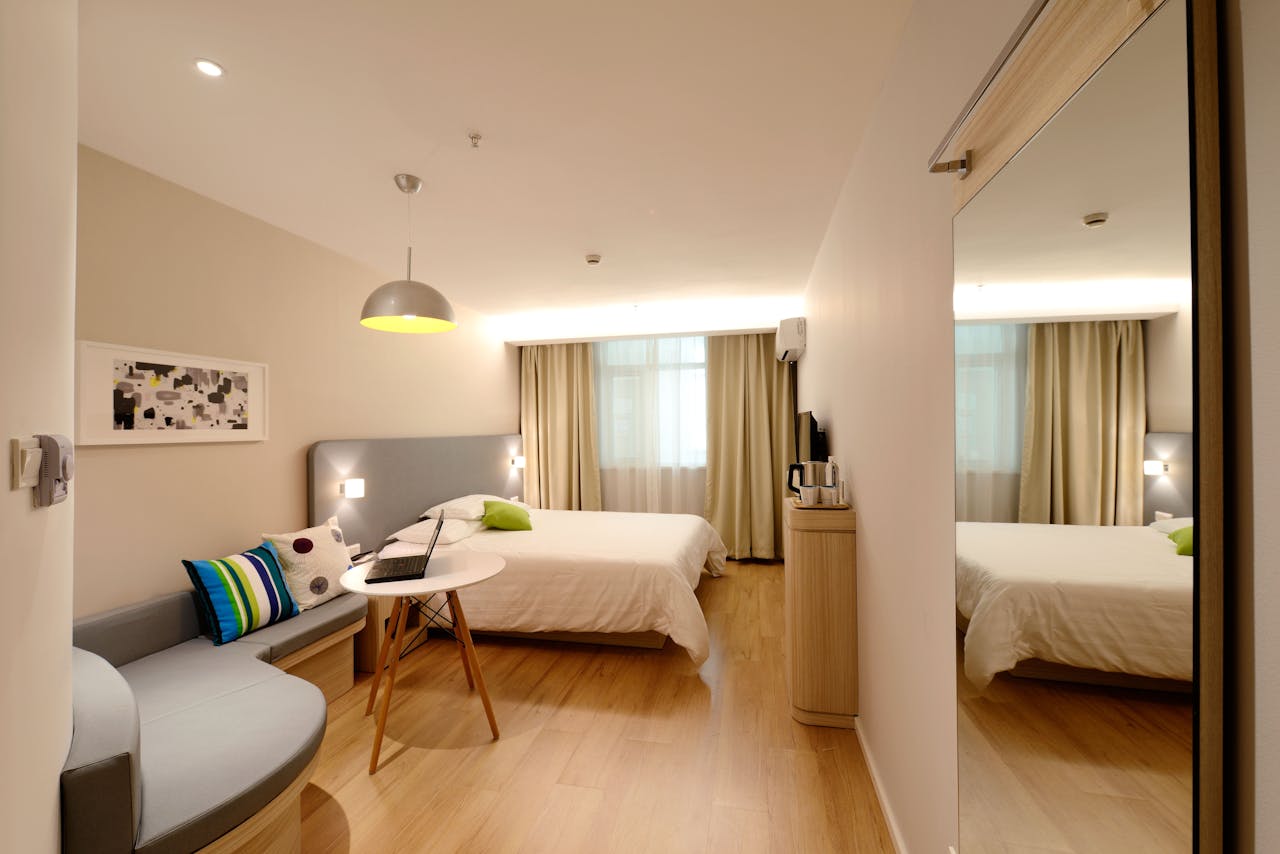Trends in Minimalist Home Design
Minimalism has progressed past being a design principle toward becoming an all-inclusive way of life that promotes practical functionality in combination with intentional purpose.
This modern movement in home design continues growing while adapting to meet the requirements of our present as well as our changing culture.
Minimalist house designs combine sustainable materials with uncluttered architectural elements to create spaces that are equally stylish and useful.
Select minimalist residential design patterns, along with their deep analysis, reveal how contemporary spaces convert into calm and useful retreats.
1. Sustainable and Eco-Friendly Minimalism
Modern minimalist homes create their foundation through sustainability principles.
More homeowners choose sustainable practices that follow the “less is more” principle from minimalist design philosophy.
Key Features of Sustainable Minimalism
Natural Materials: Home décor uses a mix of wood, stone, and bamboo together with recycled materials for furniture pieces and floors, along with decorative finishes.
Using these materials creates exceptional texture while maintaining eco-friendliness and enhancing minimalist room aesthetics.
Energy Efficiency: The present infrastructure uses solar panels together with LED lighting technology and energy-efficient appliances in order to lower total energy consumption.
Detailed design incorporating broad panes and vaulted ceilings allows homes to absorb ample outside illumination thus minimizing electricity consumption.
Eco-Conscious Furniture: Modern designers seek sustainable furniture materials and secondhand products which offer minimalist style advantages.
Why it’s Trending
Pursuit of eco-responsibility creates perfect harmony between minimalist practices and sustainable design approaches.
The combination of mindful decision-making supports homeowners while creating environmental benefits.
Multifunctional Spaces and Furniture
When you practice minimalist design, you should maximize limited space areas.
Changes in interior locations combined with versatile home furnishings now represent an expanding societal trend.
Popular Examples of Multifunctional Design
Convertible Furniture: Furniture items that include sofa beds ,together with extendable dining tables and wall-mounted desks, allow space areas to adapt through changing user requirements.
Hidden Storage Solutions: Decorative storage cabinets integrated into walls and under-stair nooks in combination with furniture platforms featuring compartments, allow users to hide excess items effectively.
Flexible Room Dividers: Rooms hold their boundaries through sliding doors, together with foldable panel,s while curtains help. This method creates adaptable, dynamic areas.
The Appeal of Multifunctionality
The diminishing size of urban dwellings drives homeowners to select designs that maximize available space.
Multi-use furniture combined with flexible spaces allows people freedom of movement while the minimalistic design maintains both functionality and organization.
Neutral Color Palettes with Bold Accents
Minimalism trends have integrated little pops of color together with textured additions while preserving the fundamental simplicity of spaces.
Trends in Minimalist Design Incorporate Fundamental Color Preferences
Timeless Neutrals: No matter how you look at it the fundamental color schemes of minimalist rooms are white, beige, and gray along with soft dirt-like hues.
Bold Accents: Designers introduce small blocks of colorful design elements that include artistic pieces and bold seating options and throw pillows to enhance design interest.
Natural Greens: The space earns a refreshing feel when designers integrate plants as decoration across neutral furnishings.
Textural Layers
Minimalist design’s emphasis on texture has grown alongside color to become one of its main design elements.
The combination of plush rugs with woven baskets and linen curtains and wooden finishes creates depth alongside warmth because it preserves minimal characteristics.

Technology Integration for Seamless Living
The definition of minimalist design embraces smart home technology which provides both useful functionality and automated convenience while hiding clutter from view.
Smart Features Enhancing Minimalism
Integrated Systems: Designed smart devices that function as thermostat controls and security systems integrate naturally with home décor thereby eliminating separate product requirements.
Minimalist Appliances: Built-in cooker units alongside sound equipment and refrigerator components preserve the basic minimalist principles in interior design.
De-cluttered Surfaces: Single surfaces remain neat with wireless charging systems joined by underground cable organization modules.
Why Tech Fits Minimalism
Technology integrates seamlessly with minimalism by creating efficient systems that simplify life yet preserve a minimalistic design appearance.
The technology focuses on being “invisible” so functional elements do not interrupt the design scheme.
Biophilic Design and the Connection to Nature
The rise of wellness trends has caused minimalist design to integrate elements harvested from nature that highlight natural-human linkages.
Biophilic Design Elements
Indoor Greenery: Houseplants and vertical gardens and moss walls help bring nature inside bringing soothing relaxation to indoor environments.
Natural Light: The combination of floor-to-ceiling windows and glass walls along with skylights allows natural light to pour into spaces which sustains mental wellness.
Organic Shapes: Minimalist spaces acquire natural simplicity through organic layouts and rounded furniture elements in addition to free-flowing design lines that emulate natural formations.
Benefits of Biophilic Minimalism
Through its design approach this trend develops peaceful spaces that improve both emotional state and physical wellness for occupants. The relaxed atmosphere of minimalist spaces receives its foundation through this approach which supports intentional living practices.
Conclusion
Minimalist design keeps rising in popularity by merging operational efficiency with attractive architectural details that adoption sustainable lifestyle values and health-oriented practices.
Homeowners who bring sustainable materials together with multifunctional furniture and smart technology and integrate biophilic elements can design meaningful environments.
These modern minimalist design trends provide foundational ideas to build both fresh and updated homes which combine purpose and elegance through their simplicity.
Also read: The Role of Technology in Reducing Construction Costs


I am not sure where youre getting your info but good topic I needs to spend some time learning much more or understanding more Thanks for magnificent info I was looking for this information for my mission
Thank you so much—we really appreciate the encouragement.